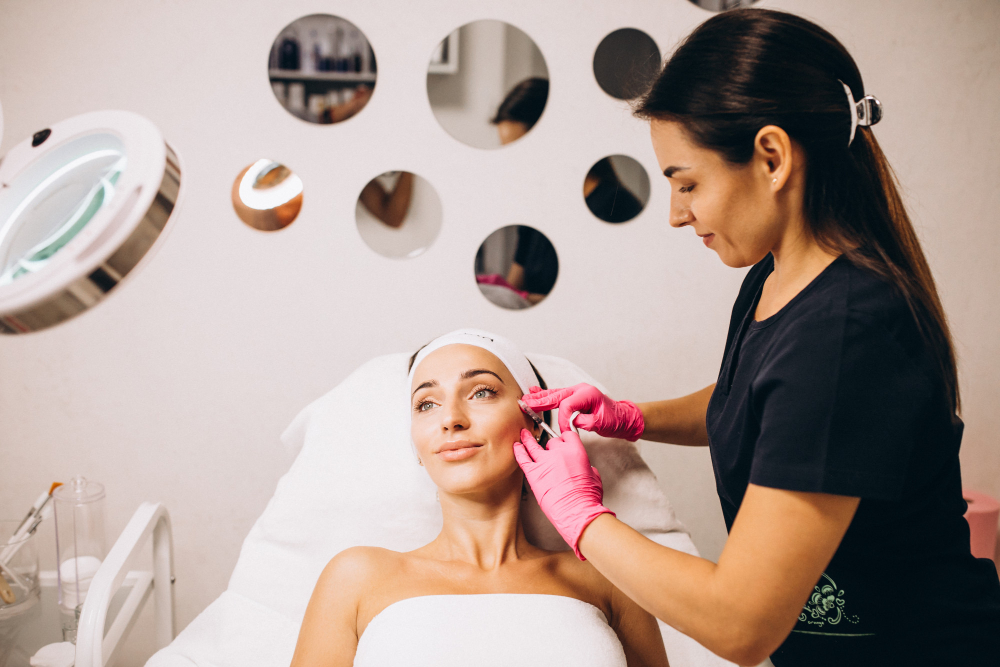
When it comes to achieving smooth and glowing skin, dermaplaning treatments have taken the skincare world by storm. This simple yet highly effective procedure is becoming a go-to for those who want a refreshed, polished look without resorting to complex routines or harsh chemicals. But what exactly is dermaplaning, and why should it be a part of your skin care essentials? Let’s dive into everything you need to know to get started.
What Is Dermaplaning?
Dermaplaning is a non-invasive skincare treatment that uses a sterile surgical blade to gently exfoliate the top layer of dead skin cells and remove fine facial hair (peach fuzz). It’s a straightforward procedure that provides instant results, leaving your skin smooth, soft, and ready to absorb other skincare products more effectively.
Why Is Dermaplaning a Skin Care Essential?
Our skin faces daily challenges like pollution, makeup, and natural cell buildup, which can make it look dull and uneven. Incorporating dermaplaning into your routine helps tackle these issues by creating a clean, fresh canvas. Here’s why it’s considered a must-have in modern skincare:
- Enhanced Exfoliation
Dermaplaning removes dead skin cells, promoting cell turnover and revealing brighter, healthier skin. - Better Product Absorption
After dermaplaning, your serums and moisturizers penetrate deeper, maximizing their effectiveness. - Makeup Application Made Easy
A smoother skin surface means makeup glides on seamlessly, giving you that flawless finish. - Gentle and Quick
Unlike some exfoliation methods, dermaplaning is suitable for most skin types and only takes about 30 minutes.
How Dermaplaning Fits Into Your Skincare Routine
To get the best results from dermaplaning treatments, timing and aftercare are key. Here’s how you can incorporate it into your skin care essentials:
1. Start with a Clean Slate
Cleanse your face thoroughly before the treatment to ensure no residue interferes with the process.
2. Pick the Right Timing
Dermaplaning can be done every 3–4 weeks, depending on your skin’s needs. Avoid overdoing it to prevent irritation.
3. Follow Up with Hydration
After the treatment, your skin may feel a bit sensitive. Use a gentle moisturizer to lock in hydration and a broad-spectrum sunscreen to protect against UV damage.
Who Can Benefit from Dermaplaning?
Dermaplaning is ideal for individuals with:
- Dull or uneven skin texture
- Fine facial hair that affects makeup application
- Dry or flaky skin
- Mild acne scars or sun damage
However, if you have active acne, open wounds, or very sensitive skin, consult with a skincare professional to determine if dermaplaning is right for you.
The Myths and Facts About Dermaplaning
Let’s clear up some misconceptions:
- Myth: Dermaplaning makes hair grow back thicker.
Fact: Hair regrows at the same rate and texture as before. - Myth: It’s only for people with dry skin.
Fact: Dermaplaning benefits almost all skin types, though it’s best to avoid it if your skin is highly sensitive. - Myth: It’s the same as shaving.
Fact: Dermaplaning is more precise and removes dead skin cells, not just hair.
What to Expect During a Dermaplaning Treatment
The procedure is quick, painless, and requires no downtime. Here’s a step-by-step breakdown:
- Preparation
Your face will be cleansed to remove dirt and oil. - The Procedure
Using a sterile blade, the specialist gently scrapes off the outer layer of dead skin and peach fuzz. - Post-Treatment Care
A soothing moisturizer and sunscreen are applied to protect your fresh skin.
DIY Dermaplaning: Is It Safe?
While at-home dermaplaning kits are available, professional treatments are safer and more effective. Professionals use sterile tools and precise techniques to minimize the risk of cuts or irritation. If you’re attempting DIY dermaplaning, follow all instructions carefully and avoid using dull blades.
Benefits Beyond Beauty
Dermaplaning isn’t just about looking good—it’s about improving your skin’s health. By removing dead cells and stimulating circulation, this treatment helps your skin breathe and renew itself more effectively. Over time, you’ll notice a more even tone, reduced fine lines, and a radiant glow.
Final Thoughts
Dermaplaning treatments have earned their place in the world of skin care essentials for a reason. They’re simple, effective, and deliver immediate results. Whether you’re prepping for a special event or just want to enhance your everyday routine, dermaplaning is worth a try. Pair it with good skincare habits, and you’ll see a noticeable difference in how your skin looks and feels.
FAQs
1. Is dermaplaning safe for all skin types?
Yes, but avoid it if you have active acne or very sensitive skin.
2. How often should I get dermaplaning treatments?
Every 3–4 weeks, depending on your skin’s needs.
3. Does dermaplaning hurt?
No, the treatment is painless and gentle.
4. Can I wear makeup after dermaplaning?
Yes, but wait 24 hours to allow your skin to recover fully.
5. Does dermaplaning have long-term effects?
With consistent treatments, you’ll notice smoother texture and improved skin health over time.